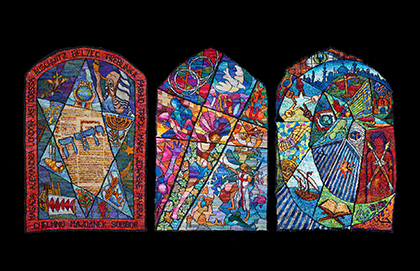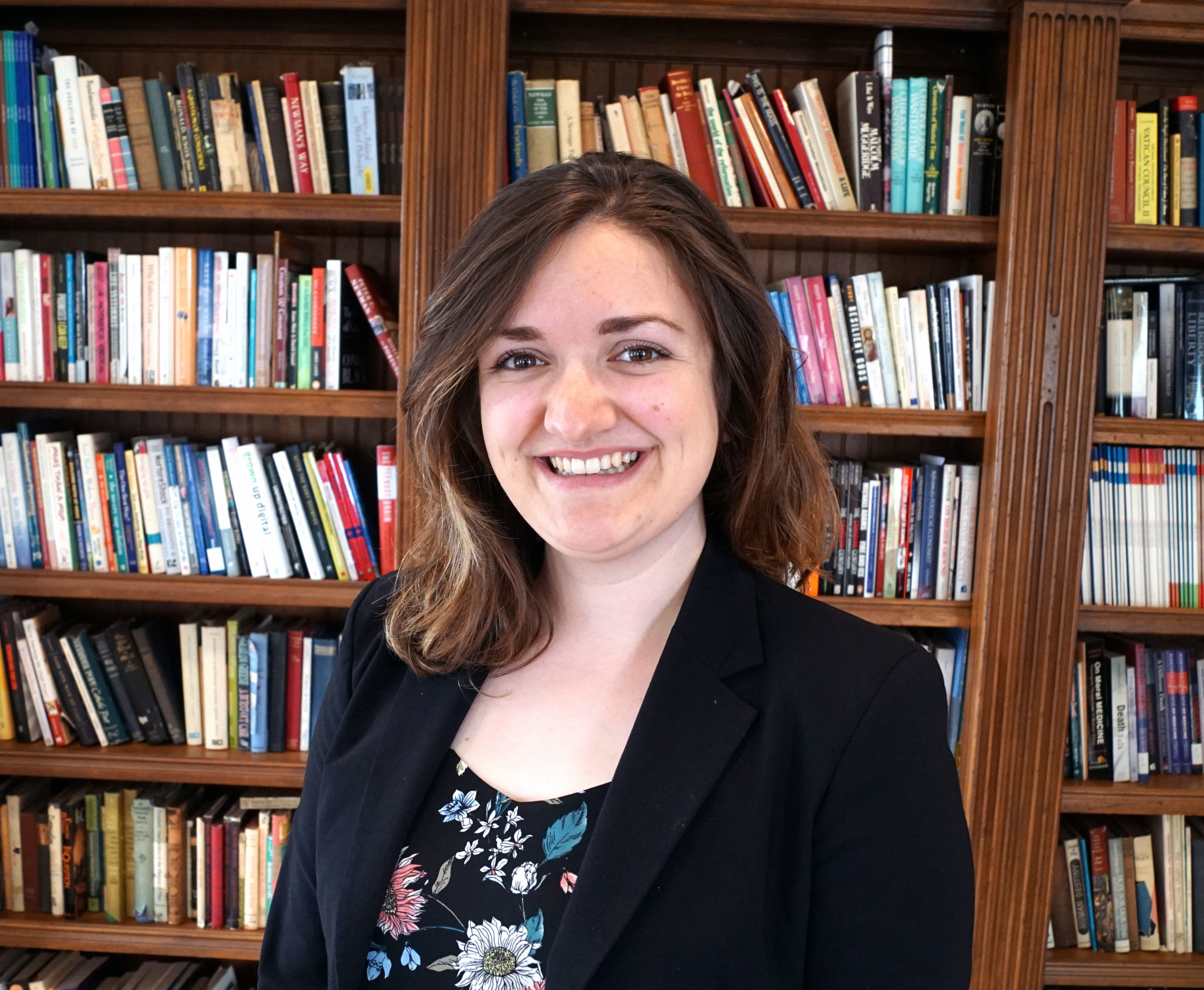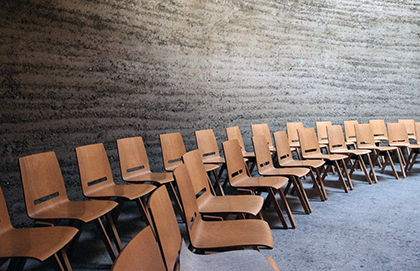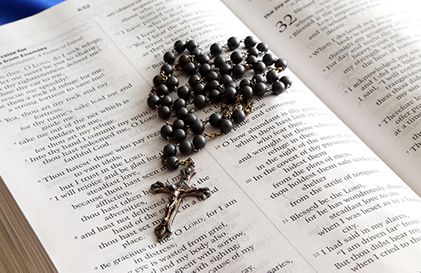Photo credit: Jorjas Photography
Unveiling the artist’s work at the end of a show might seem backwards, particularly when the entire show revolves around the pieces themselves. But in Kirk Dunn’s The Knitting Pilgrim, it seems appropriate.
Dunn drops the curtains from each of his three knitted tapestries in fell swoops, leaving before his audience the 15-year project that he once thought would take a mere 10 months. The audience gasps in disbelief at the marvels before them. Each piece stands nine feet in height, five feet in width, and full of vibrant crisscrossing colours that look so uniform you could swear they were painted. The three pieces together form his collective representation, Stitched Glass.
Kirk performed his multidisciplinary one-man show at Temple Israel in Ottawa this week, the most recent stop on his tour around Ontario displaying his knitted marvels and promoting deeper pluralistic discussions.
The three tapestries represent the three Abrahamic religions – Christianity, Judaism and Islam – using imagery of highlights and low points of the respective religions’ histories, resembling a patchwork of stain glass windows. The Star of David, a Cross, and a Crescent Moon and Star, respectively represent each faith. Embedded far deeper in the finished product were conversations Dunn engaged in that led to the creation of each tapestry, the hours of work that he put into the art, and the thousands of dollars he spent on 90 pounds of yarn. The motivation waned at times in the decade-and-a-half of work, but it was well worth his time, seeing the finished product.
During his 60-minute multimedia show, Dunn tells his story to the audience. It’s a story that encapsulates the frustrations and breakthroughs he faced during the arduous process of forming a depiction of ecumenism. He spatters the unique storytelling with interspersed knitting tutorials and photos of his kids’ quickly growing up. An actor, knitter, and writer, Dunn’s performance is expressive, humorous and thought provoking.
The project began after 9/11, during a time Dunn describes as polarized, when there was little room for further thought about interreligious dialogue, when anti-Semitism and Islamophobia were gaining serious traction. Dunn remembers being in a situation with other church folk who spoke ill of Muslims. He did not know how to respond but knew that staying silent would be just as bad as joining in with the ranks of those who judged the other faiths.
“I’m trying to be brave enough to ask questions about things I don’t understand,” he says to the audience, expressing the desire to properly capture the religions and engage with pluralistic conversation.
The very act of asking questions these days seems to be disappearing from our public spaces. It’s something Dunn has encountered abrasively in his work, too. At one of his events prior to finishing Stitched Glass, Dunn recalls, a man stood up and told him that he “could not disagree more” with Dunn’s ecumenical views on the shared beliefs of the Abrahamic faiths. Dunn wondered if he might be alone in his thinking, whether using his time to pursue it was worthwhile.
The defining, ephemeral moment of his performance occurred as a sudden epiphany in the show, an expressive moment in which he realizes the three Abrahamic religions are not so different. Dunn examines the five pillars of Islam as similar to key tenets in Judaism and Christianity: profession of faith, prayer cycles, charity toward neighbour, fasting, pilgrimages. Displaying videos of a Jewish rabbi, Muslim imam and his own Presbyterian views, the audience hears the explanations of how each belief, when strung together, is not so different from the others.
At a time when 53 per cent of Canadians think that reducing the presence of religion in public life is a sign of progress, Dunn’s work bears an important message for ecumenism. While the project began with conversations more than 15 years ago, we are now even more polarized, separated and segregated than before. Our society and our world are ever-changing, but Dunn describes that his vision for the project stayed the same as his own spirit.
“I have no more authority now than I did when I started. All I know is how to knit. And ask questions. Is that enough?” he recalls.
Many times during the show, as he retells his story, he describes moments wherein he came close to giving up, only having his wife, Claire, encouraging him even more. Rejected for grants, shut down in conversation, Dunn wondered if his work was ever going to be worth the trouble.
“Nothing about this was a direct route. But when you look at what it means to be on a pilgrimage, it says ‘a wandering path,’ not a straight line. An act of religious devotion. A journey of an artist.”
Dunn could not have known when he began this work in 2004 that the conversation would become increasingly difficult and polarized, but the display of his three tapestries, colourful and lively, give interfaith conversations new grounds and an opportunity for open dialogue.
“I understand the challenge of a Christian finding enlightenment in other faiths. But isn’t being challenged the point of a pilgrimage?”
Kirk Dunn’s presentation reflects a very important conversation for our times, when conversation seems non-existent. His gathering of different faiths together promotes a message of peace in trouble, and speaks in an area where many are too afraid to go. His knitting has the opportunity to stitch together conversations of different belief systems, as he says: “We are stronger knitted together than we are apart.”





